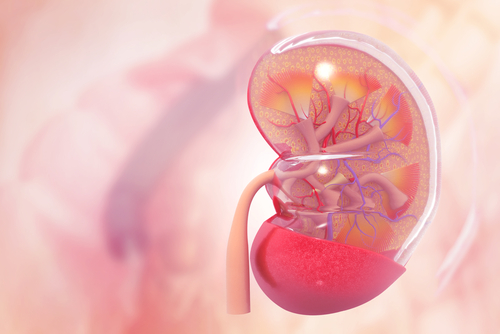Blood in Urine Linked to Higher Risk of Kidney Disease Relapse in AAV Patients, Study Finds

The presence of blood in the urine is associated with a four times higher risk of kidney disease relapse within 44 months after achieving remission in patients with ANCA-associated vasculitis, a study has found.
The study, “Prognostic Value of Microscopic Hematuria after Induction of Remission in Antineutrophil Cytoplasmic Antibodies-Associated Vasculitis,” was published in the American Journal of Nephrology.
Between 55% and 90% of patients with anti-neutrophil cytoplasmic antibody (ANCA)-associated vasculitis (AAV) experience renal involvement.
Kidney biopsies of AAV patients often reveal the presence of necrotizing extracapillary pauci-immune glomerulonephritis (PIGN), which is characterized by inflammation and damage of kidney blood vessels. This complication can negatively affect renal function, causing hematuria (blood in urine) or proteinuria (protein in urine), and ultimately leading to severe renal failure.
Several studies have shown that initial renal impairment in AAV patients is a major long-term risk factor for the development of end-stage renal disease (ESRD), as well as mortality. Therefore, the goal of AAV treatment is to induce a prompt and sustained remission of ANCAs and prevent renal complications.
Researchers often debate the significance of hematuria that can be detected in patients after they reach remission. While it could be a sign of toxicity of AAV medicines, such as cyclophosphamides, it can also reflect ongoing disease activity, including inflammation and/or chronic kidney injury.
A group of French researchers conducted a multicenter retrospective study to further investigate the relevance of hematuria at remission in AAV patients with PIGN. In particular, they wanted to determine whether hematuria at remission could be a prognostic signal for ESRD or relapse of renal disease down the road.
Researchers identified and evaluated 86 patients with AAV and PIGN in northern France. All patients were given conventional treatment and were considered to be in remission. They were then divided into two groups according to the presence (H+) or absence (H-) of hematuria. In both groups, 41 patients (48%) had hematuria at remission while 45 (52%) did not.
Results indicated there was no significant difference between the two groups concerning the development of ESRD or the number of renal relapses. However, renal relapse did occur earlier in the H+ group than in the H- group.
In addition, the survival rate of patients without renal relapse was significantly lower in the H+ group than in the H- group.
Further analysis indicated that patients with hematuria at remission were 4.15 times more likely to experience renal relapse within 44 months. In addition, patients who were taking maintenance (continued) immunosuppressive therapy at remission were 4% less likely to experience a renal relapse.
Based on these findings, the team believes that “hematuria at remission after a first PIGN flare was not associated with ESRD but with the occurrence of [renal relapse] within 44 months of remission.” Still, “because of its poor predictive value, its presence alone cannot be used as an indication to modify therapy.”
Additional studies focused on assessing the “influence of hematuria in association with other known risk factors for relapse (serum creatinine, type of ANCA) or on new biomarkers (soluble CD163 or CD25)” are still warranted to “provide more precise information on the risk of renal relapse,” they added.






